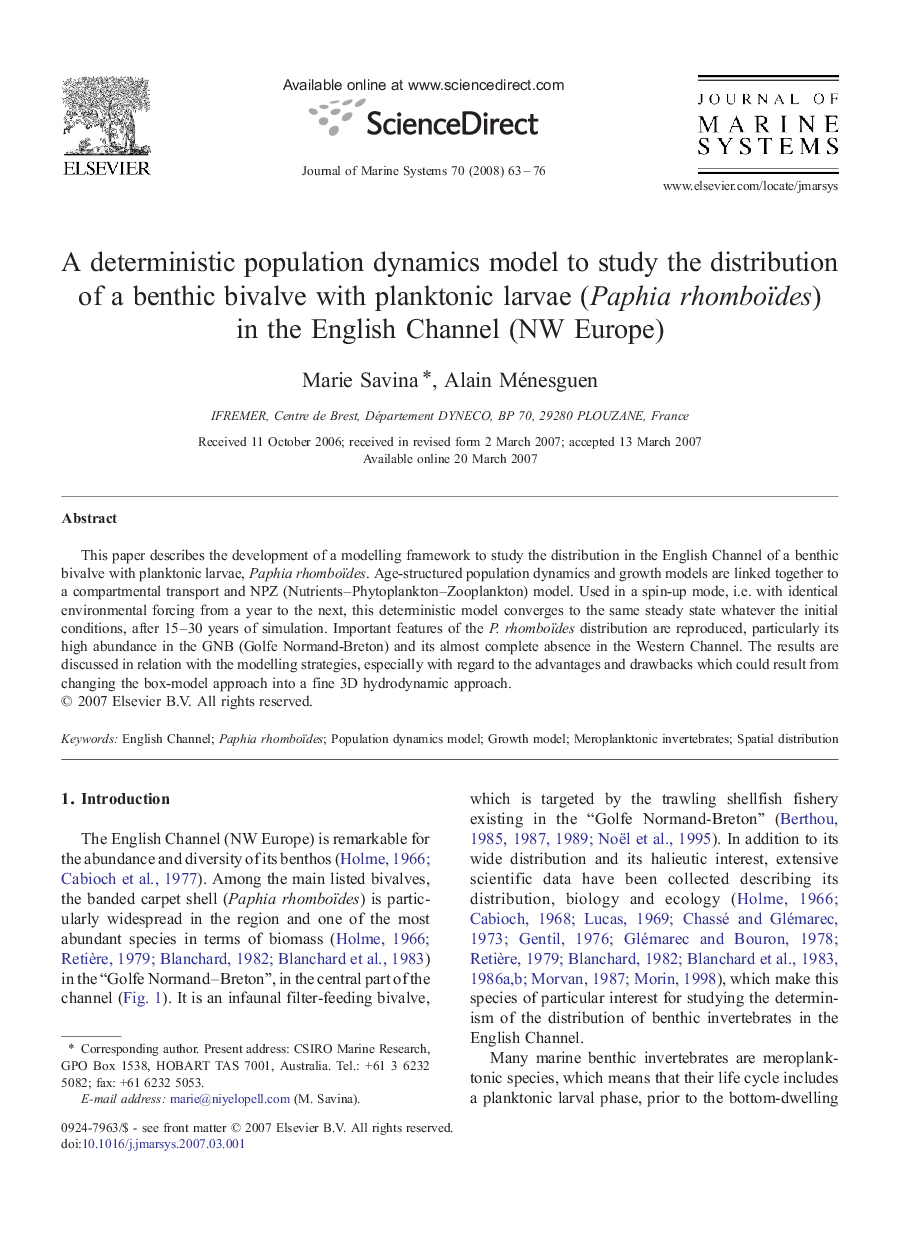| Article ID | Journal | Published Year | Pages | File Type |
|---|---|---|---|---|
| 4549143 | Journal of Marine Systems | 2008 | 14 Pages |
This paper describes the development of a modelling framework to study the distribution in the English Channel of a benthic bivalve with planktonic larvae, Paphia rhomboïdes. Age-structured population dynamics and growth models are linked together to a compartmental transport and NPZ (Nutrients–Phytoplankton–Zooplankton) model. Used in a spin-up mode, i.e. with identical environmental forcing from a year to the next, this deterministic model converges to the same steady state whatever the initial conditions, after 15–30 years of simulation. Important features of the P. rhomboïdes distribution are reproduced, particularly its high abundance in the GNB (Golfe Normand-Breton) and its almost complete absence in the Western Channel. The results are discussed in relation with the modelling strategies, especially with regard to the advantages and drawbacks which could result from changing the box-model approach into a fine 3D hydrodynamic approach.
